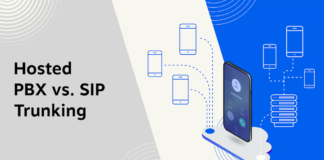
In today’s fluid business landscape, leadership’s role in guiding organisations to be nimble, adaptive and innovative is more critical than ever. The essence of agility transcends mere processes—it’s rooted in a mindset that emphasises adaptability and human-centric values.
For this reason, business leaders and managers must focus not only on developing their own agile skills, but on developing an agile environment around them.
This article will dive further into the basis of an agile workplace and how leaders can cultivate agile environments to fit their unique requrements.

What is an agile work environment?
An agile work environment refers to a dynamic and flexible approach to work that prioritises adaptability, collaboration and responsiveness. This set up allows teams to embrace change and quickly adjust to evolving circumstances.
The agile methodology originated in software development but has since been widely adopted across various industries.
Key characteristics
- Flexibility and the ability to swiftly adjust to changing priorities and requirements.
- Collaboration, with open communication channels and regular interactions among team members.
- Iterative progress, with work is organised into iterative cycles or sprints, allowing for continuous improvement and the regular delivery of incremental results.
- Customer focus, seeking regular feedback from customers or end-users and incorporating it into the ongoing development process.
- Cross-functional teams composed of individuals with diverse skill sets.
Benefits of having an agile work environment
The overarching benefit is that the increased adaptability to changing circumstances and priorities allows agile teams to stay ahead of the curve in a dynamic business environment.
Agile methodologies often result in faster project delivery due to the iterative nature of the work and the focus on continuous improvement.
Regular feedback loops and testing within agile frameworks contribute to higher-quality outputs, as issues can be identified and addressed early in the process.
Agile environments often empower team members, providing them with autonomy and opportunities for skill development. This can lead to increased job satisfaction and motivation, as well as reduced staff absenteeism and turnover.

Understand the essence of ‘being’ agile
True agility is about embodying a mindset, not just implementing methodologies. The real transformation occurs when an organisation moves from merely ‘doing’ agile to genuinely ‘being’ agile, emphasising human interactions, continuous growth and an open attitude toward change and uncertainty.
A great way to learn the basics and integrate them into your workplace is by taking a foundational course in agile thinking. Short courses are an ideal introduction to the concept, so look for options like the Media Design School Agile Mindset micro-credential.
Draw from diverse insights
Real-world experiences from various industries offer invaluable lessons. These insights underscore the versatility of the agile mindset and how it can be adapted and applied across different contexts and challenges.
Seek input from a diverse range of people on your team, in your organisation and within your professional network. This will help you develop an agile mindset and will help you create an agile environment in your workplace.

Leverage the power of collaboration
When diverse professionals come together, they bring a rich tapestry of perspectives. Collaboration fosters innovation, challenges existing norms and refines an understanding of agility, making it more comprehensive and nuanced.
You could introduce team-building activities that foster cross-departmental collaboration. This will help you ensure that different teams understand and appreciate each other’s roles in the agile framework and can work together to facilitate it.
Create an agile roadmap
For an organisation to transition seamlessly, a strategic roadmap is vital. This plan should not just be about implementing agile tools but should be deeply rooted in promoting a culture that values flexibility, collaboration and continuous learning.
Consider organising quarterly strategy meetings with a specific agile focus, giving department heads and other leaders the opportunity to present their agile success stories and future plans. This helps guide an organisation-wide understanding of what’s working and what needs adjustment, as well as creating a roadmap how that will be done.

Understand current organisational culture
Before introducing any transformation, it’s crucial to gain a solid understanding of the existing culture of your organisation. A deep dive into your existing organisational culture can shed light on those areas that align with agile principles and those that will require change.
You could conduct an annual survey to gauge the organisation’s current state of agility. Analysing the results will help you identify areas that are in alignment with agile principles and those that need transformation. This information may also guide you in choosing the appropriate methodologies and implementation.
Embrace agile development methodologies
While the agile mindset is foundational, methodologies like Scrum and Kanban offer tangible tools and processes to facilitate agile practices in the workplace. Implementing agile project management methodologies and processes, when adapted to your organisation’s unique needs, can significantly bolster the agile transition. Ensure that teams can choose the method that best fits their workflow and adapt them as needed.
Media Design School’s Agile Thinking micro-credential course covers several of these methodologies, teaching you how to apply, analyse and evaluation them in the context of your workplace.

Evaluate the suitability of agile approaches
Every organisation has its own challenges and dynamics. It’s crucial for leaders to understand the available agile methodologies and principles, so they can critically assess which are best suited to their specific context. This helps to ensure a tailored and effective transition across each part of the organisation.
One way you could implement this in your organisation is by creating a task force of agile experts that regularly reviews and assesses the effectiveness of your chosen agile methodologies. Adjust them based on the unique challenges and dynamics of your organisation.
Commit to continuous growth
The journey towards a truly agile workplace is ongoing. Leaders and organisations must be committed to continuous learning, iterative improvement and an unwavering openness to change. As well as formal qualifications such as Media Design School’s Agile Thinking micro-credential course, you must be open to learning in your day to day.
Be sure to dedicate resources (time, budget and personnel) for continuous learning. Consider implementing a set time, such as an ‘Agile Day’ once a month, where teams – not just leaders – share learnings, innovations and areas for improvement in their agile journey.
Embracing the agile mindset goes beyond mere methodologies—it’s about fostering a culture that not only adapts to change but flourishes within it. For this reason, a foundational course, while essential, is simply the first step towards agile success. The rest of the journey needs to come from you and your desire for ongoing learning and growth.











